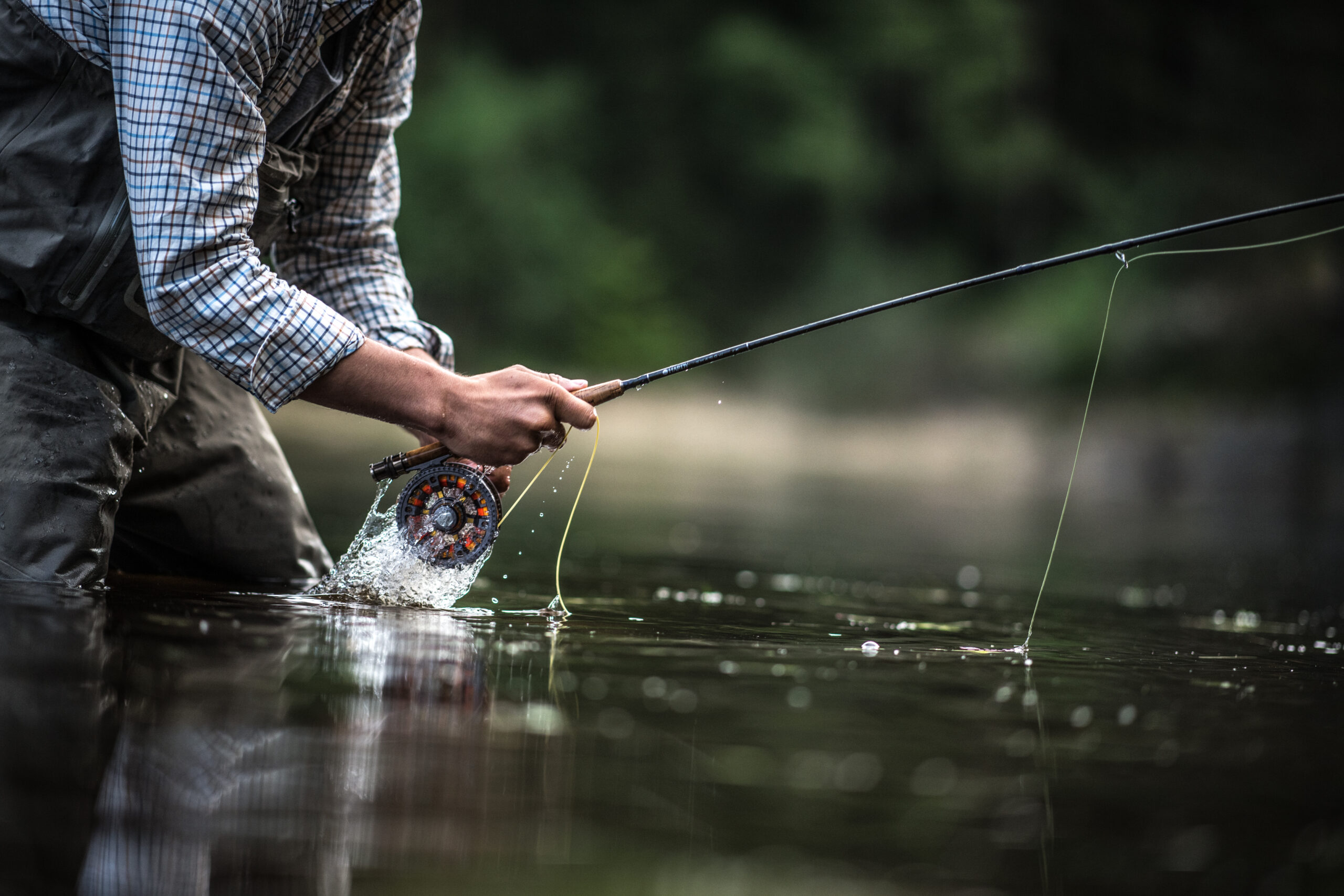Fly Fishing Techniques
Fly Fishing Techniques
Mastering the Double Haul: Improving Your Casting Distance
The double haul is a casting technique essential for fly fishers seeking to extend their reach and improve accuracy, especially in windy conditions or when fishing larger water bodies.
This technique involves a coordinated effort between both hands to increase the speed of the fly line during the cast, resulting in longer distances.
Key Steps:
- Start with the Basics: Ensure you’re comfortable with basic casting techniques before attempting the double haul.
Proficiency in timing and rhythm is crucial. - Understand the Mechanics: The double haul involves a pull on the line with your non-casting hand during both the forward and backward casts.
This action increases line speed. - Practice the Timing: The haul on the backward cast loads the rod more deeply, while the forward haul increases line speed.
Timing is everything; the haul should be synchronized with the acceleration of the rod. - Gradual Learning: Begin by practicing the technique with short lines. As you become more comfortable, gradually increase the line length.
- Consistent Practice: Like any skill, consistency is critical. Dedicate time to practice the double haul in various conditions to master its nuances.
The Art of Dry Fly Fishing: Techniques and Tips for Success
Dry fly fishing is the quintessential fly fishing technique, offering the exhilarating experience of seeing fish rise to the surface to take a fly.
It requires precision, patience, and understanding insect behavior and river currents.
Essential Tips:
- Fly Selection: Choose flies that match the local hatch. Pay attention to size, shape, and color to mimic natural insects effectively.
- Reading the Water: Look for feeding lanes and seams where fish are likely to hold. Rising fish give away their positions.
- Presentation: The key to successful dry fly fishing is a natural presentation. Ensure your fly lands softly and drifts naturally with the current.
- Stealth and Positioning: Approach the fishing spot carefully to avoid spooking fish. Your position should allow for a compelling cast and minimal shadow on the water.
- Adjustments: Be prepared to change flies, positions, and techniques based on the fish’s response and environmental changes.
Nymphing for Beginners: A Step-by-Step Guide
Nymphing is a technique that targets fish feeding below the surface, where trout and other species spend most of their feeding time. This method can be highly effective, especially in waters where fish are less likely to rise to a dry fly.
Getting Started:
- Gear Setup: Use a weighted nymph or add a split shot to get your flies to the desired depth. A strike indicator can help detect subtle takes.
- Choosing Nymphs: Start with general patterns like the Pheasant Tail or Hare’s Ear. Observe the underwater insects in your fishing area for more specific selections.
- Casting and Drift: Cast upstream or across, allowing the nymph to sink. A natural drift is crucial; watch your strike indicator for signs of a fish.
- Setting the Hook: Be ready for quick, often subtle strikes. A gentle lift of the rod at any sign of a strike can secure your catch.
- Practice and Patience: Nymphing requires observation and adaptation. Experiment with different nymphs, depths, and speeds to discover what works best in your fishing environment.
Each technique offers a unique approach to fly fishing, catering to different environments, conditions, and personal preferences.
Whether casting long distances with the double haul, enjoying the visual appeal of dry fly fishing, or exploring the underwater world with nymphing, mastering these methods will enhance your fly fishing experience.
Fly Fishing Techniques
| Technique | Description | Key Benefits |
|---|---|---|
| Double Haul | Improves casting distance and speed, involving a synchronized pull on the line during both the forward and backward casts. | Greater distance, better wind handling. |
| Dry Fly Fishing | Fishing with flies that float on the water surface, imitating adult insects. Requires precise casting and timing. | Visual strikes, surface action. |
| Nymphing | Using weighted flies to fish beneath the water's surface, often with a strike indicator to detect bites. | Effective year-round, versatile. |
| Streamers | Large flies that mimic baitfish or other large aquatic prey, usually fished with active retrieval techniques. | Target larger fish, aggressive strikes. |
Fishing Reel Line Capacity Calculator
How to use the fishing reel line capacity calculator
Using the Fishing Reel Line Capacity Calculator is straightforward. This tool helps anglers determine how much fishing line their reel can hold based on the reel’s capacity factor and the diameter of the line. Here’s a step-by-step guide on how to use it:
Step 1: Gather Your Reel and Line Information
Before you start, you’ll need two pieces of information:
– Reel Capacity Factor: This hypothetical coefficient represents your reel’s capacity. It could vary based on the reel’s make and model. For our purposes, this is a made-up value to demonstrate how the calculator works.
– **Line Diameter:** The fishing line diameter you plan to use is measured in millimeters (mm).
This is usually specified on the line spool or product packaging.
Step 2: Open the Calculator
Launch the calculator, which should be accessible via a web page. The interface is designed to be user-friendly, with input fields for entering your reel and line information.
Step 3: Enter the Reel Capacity
Factor
In the input field labeled “Reel Capacity Factor,” type in the capacity factor of your reel. If you’re unsure of this number, consult your reel’s documentation or use a standard value provided by the calculator for demonstration purposes.
Step 4: Enter the Line Diameter
Next, in the field labeled “Line Diameter (mm),” input the diameter of your fishing line. For accuracy, ensure this measurement is in millimeters.
Step 5: Calculate
Once you’ve entered the necessary information, click the “Calculate” button.
The calculator will process the inputs using the formula `Capacity = Reel Capacity Factor * (Line Diameter) 2` to estimate the number of lines your reel can hold.
Step 6: Review the Result
After clicking “Calculate,” the calculator will display the line capacity in yards under the button.
This tells you approximately how much of the specified line you can spool onto your reel.
Additional Tips:
– Accuracy: For the best results, ensure the accuracy of your inputs. The calculation is only as reliable as the data provided.
– **Consult Manufacturer Specifications:** The actual line capacity of your reel may vary. Always consult with the manufacturer’s specifications or guidelines for the most accurate information.
– **Experiment with Different Lines:** If you have different types or diameters of lines, try calculating the capacity for each to plan your fishing setup more effectively.
Remember, the given formula and capacity factor are simplified for demonstration purposes.
Actual fishing reel capacities can depend on various factors, including the reel’s design, the type of line, and how tightly the line is spooled.
Always refer to your reel’s documentation for the most accurate capacity information.
